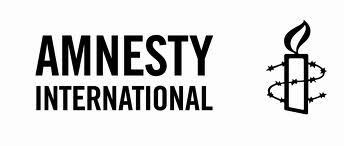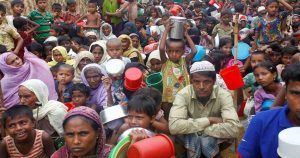Amnesty International (AI) on Tuesday urged Bangladesh authorities to immediately set up an independent and impartial investigation into the use of force after at least 44 people died in violent clashes between protesters and the police.Tens of thousands of supporters of the Islamist group Hefazat-e-Islam took to the streets in the capital Dhaka and elsewhere in Bangladesh on May 5 and the early hours of May 6. The demonstrations turned violent as protesters clashed with police, the AI said.
“There’s considerable confusion about what really happened, and why the deaths occurred. There must urgently be an immediate independent and impartial investigation into the events, including the police use of force. The perpetrators must be brought to justice,” said Polly Truscott, Amnesty International’s Deputy Asia-Pacific Director.
The protesters were seen on TV channels in Bangladesh to be attacking police, setting buses, cars, small shops and book stalls on fire. Police was seen to be using teargas, rubber and live bullets at the protesters. At least two of the dead are policemen and one was a Bangladesh Border Guard (BGB) member.
The circumstances of the protests are disputed, with police claiming the violence erupted on May 5 when protesters tried to storm a police barricade, and then pelted police officers with stones and bricks. A police operation in the early hours of May 6 led to a new round of clashes.
Police have confirmed four deaths from May 5 but have remained silent about the deaths on May 6.
Media reports estimate a total of 22 deaths in Dhaka over both days. Unofficial figures from hospitals that Amnesty International has obtained also confirm 22 deaths.
Outside Dhaka, protests in Narayanganj, Bagerhat and Chittagong (Hathazari) districts on May 6 left at least another 22 people dead.
In total, Amnesty International has been able to confirm the protest-related deaths of at least 41 civilians and three police or security force personnel across the country on May 5 and 6.
Opposition Bangladeshi National Party (BNP) claims that more than 1,000 people have been killed, but this has been dismissed by the government.
“This is an extremely volatile situation and there is still a risk of further violence. All law enforcement personnel must abide by international law enforcement standards and ensure that they do not use excessive force in dealing with the protesters,” Truscott said.
Hefajat-e-Islam has called a general strike all over Bangladesh on May 12, while police have banned gatherings of more than five people in capital Dhaka.
The AI said Hefajat-e-Islam is a relatively newly formed religious grouping mainly composed of madrassa (Islamic school) students and teachers. They demanded the introduction of stricter religious laws, including the introduction of a blasphemy law and restrictions on women’s human rights, including their freedom of movement.
Their protest on May 5 was the second in a series of demonstrations organised to push for their demands. The first protest on April 6 was largely peaceful. They initiated their second mass protests, also known as the ‘Dhaka siege’, to call on the government to implement their 13-point agenda, which includes the introduction of blasphemy laws, restriction on women’s movements and the death penalty for those found guilty of insulting Islam. UNB




